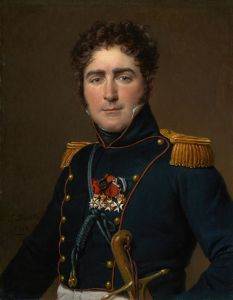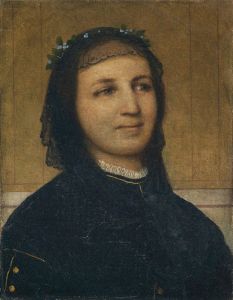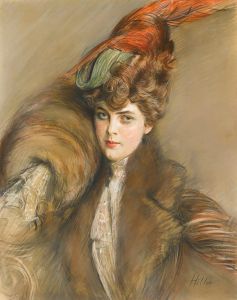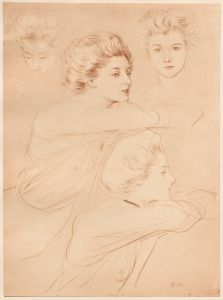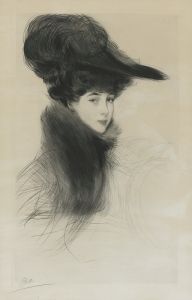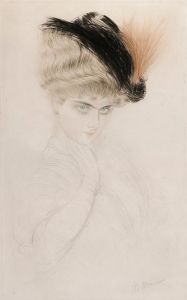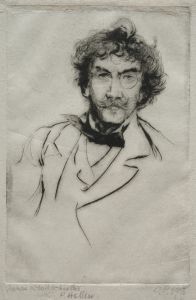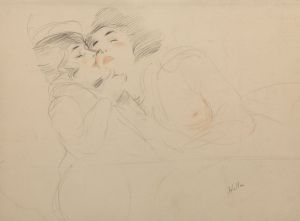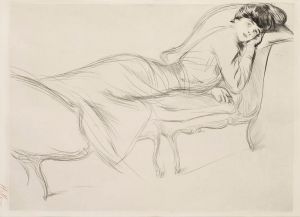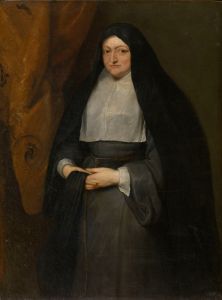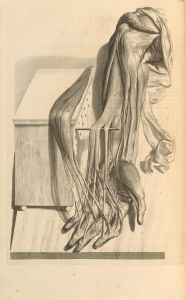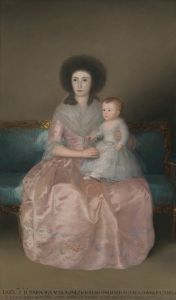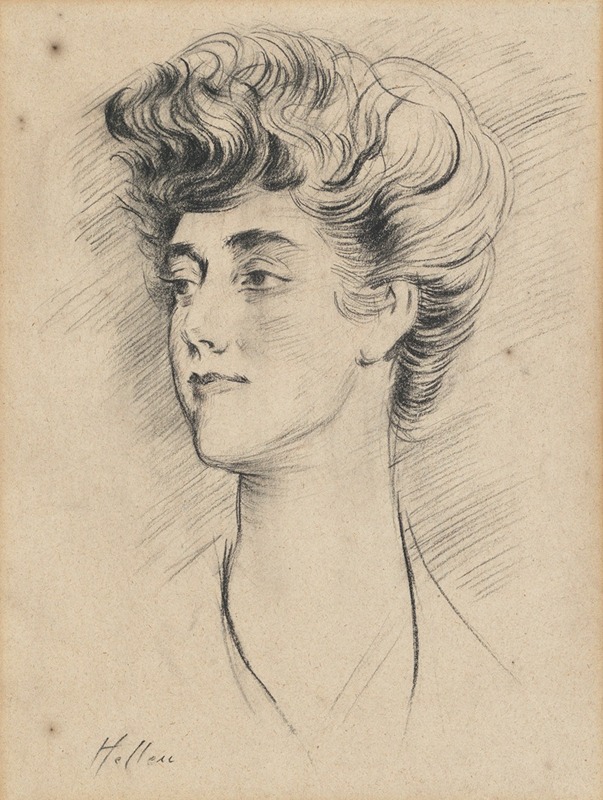
Portrait of Constance Herbert, second Marchioness of Ripon
A hand-painted replica of Paul César Helleu’s masterpiece Portrait of Constance Herbert, second Marchioness of Ripon, meticulously crafted by professional artists to capture the true essence of the original. Each piece is created with museum-quality canvas and rare mineral pigments, carefully painted by experienced artists with delicate brushstrokes and rich, layered colors to perfectly recreate the texture of the original artwork. Unlike machine-printed reproductions, this hand-painted version brings the painting to life, infused with the artist’s emotions and skill in every stroke. Whether for personal collection or home decoration, it instantly elevates the artistic atmosphere of any space.
"Portrait of Constance Herbert, second Marchioness of Ripon" is a painting by the French artist Paul César Helleu. Helleu, born in 1859 and died in 1927, was renowned for his portraits of beautiful society women, capturing the elegance and grace of the Belle Époque era. His works are characterized by their delicate lines and the use of pastels, which give his portraits a soft and luminous quality.
Constance Gwladys Robinson, née Herbert, was the second Marchioness of Ripon. Born in 1859, she was a prominent figure in British high society. She married Frederick Robinson, the 2nd Marquess of Ripon, in 1885. The Marchioness was known for her beauty, intelligence, and social influence, making her a fitting subject for Helleu's refined artistic style.
The portrait of Constance Herbert by Helleu is a testament to the artist's skill in capturing the essence of his subjects. In this work, Helleu employs his signature technique, using pastels to create a soft, almost ethereal effect. The Marchioness is depicted with a serene and composed expression, her elegant attire and poised demeanor reflecting her status and personality. The delicate lines and subtle shading highlight her features, emphasizing her grace and sophistication.
Helleu's choice of pastels for this portrait allows for a gentle blending of colors, which enhances the overall softness of the image. The background is typically understated, ensuring that the focus remains on the subject. This approach is consistent with Helleu's other works, where the emphasis is placed on the sitter's face and upper body, capturing their character and presence.
The portrait of Constance Herbert is not only a representation of an individual but also a reflection of the cultural and social milieu of the time. The Belle Époque period, spanning from the late 19th century to the outbreak of World War I, was marked by a flourishing of the arts, fashion, and society. Helleu's portraits are emblematic of this era, showcasing the elegance and refinement that defined the period.
Paul César Helleu's works, including the portrait of Constance Herbert, are held in high regard and can be found in various public and private collections. His ability to capture the beauty and spirit of his subjects has ensured his lasting legacy in the world of art. The portrait of the second Marchioness of Ripon remains a significant example of his oeuvre, illustrating his mastery of pastels and his keen eye for detail.
In summary, "Portrait of Constance Herbert, second Marchioness of Ripon" by Paul César Helleu is a distinguished work that exemplifies the artist's talent for portraying the elegance and grace of his subjects. Through his use of pastels and delicate lines, Helleu creates a soft and luminous image that captures the essence of the Marchioness and the refined society of the Belle Époque.





